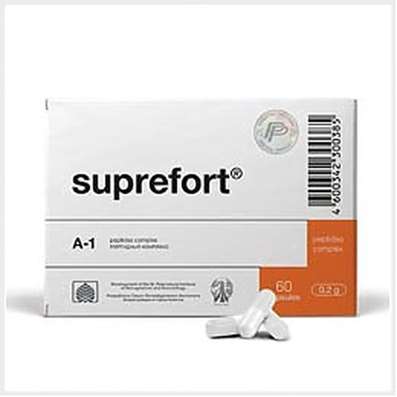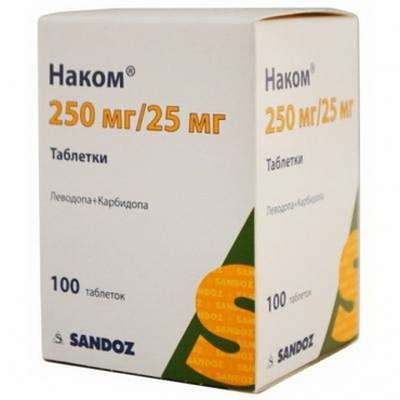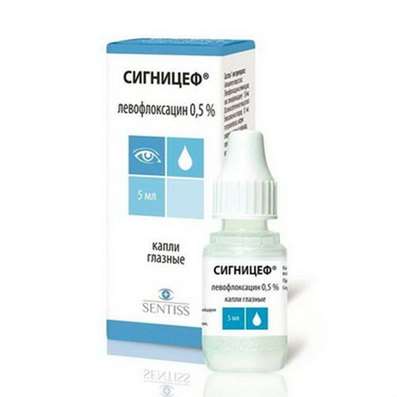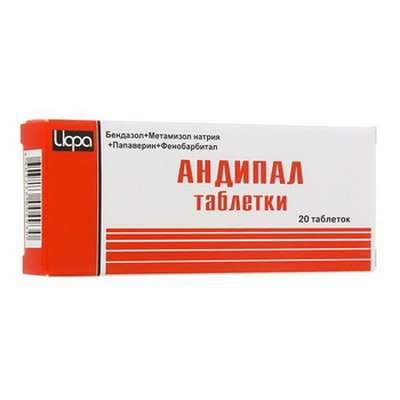Instruction for use: Ebrantil
I want this, give me price
Trade name of the drug – Ebrantil
Active substance: Terazosinum
Dosage Form: The long-acting capsules,Retard capsules, solution for intravenous administration, injection
Composition (per tablet): Solution for intravenous administration - 1 ml
active substance: urapidil hydrochloride 5.47 mg
(Corresponding to 5 mg of urapidil)
Excipients: propylene - 100 mg; sodium dihydrogen phosphate dihydrate - 0,42 mg; sodium dihydrogen phosphate dihydrate - 2,22 mg; Water for injection - up to 1 ml
The long-acting capsules - 1 caps.
active substance: urapidil 30 mg
Other ingredients: sugar semolina - 62.43 mg; methacrylic acid and methyl methacrylate copolymer (1: 2) - 0.62 mg; talc - 1.18 mg; diethyl - 0,06 mg; fumaric acid - 8.88 mg; Valium - 11.28 mg; ethylcellulose - 1.75 mg; stearic acid - 0,47 mg; hypromellose phthalate - 0.72 mg
capsule shell: gelatin - 32.707 mg; titanium dioxide (E171) - 1.2 mg; dye iron oxide yellow - 0,293 mg; Purified water - 5.8 mg
Black ink peeled for labeling: (shellac, iron oxide black dye (E172), propylene glycol) - no more than 0.19 mg
sugar nibs: sucrose - 80-91,5%; cornstarch - 8,5-20%; Purified water - not more than 1.5%
The long-acting capsules 1 caps.
active substance: urapidil 60 mg
Other ingredients: sugar semolina - 124.86 mg; methacrylic acid and methyl methacrylate copolymer (1: 2) - 1.24 mg; talc - 2.35 mg; diethyl - 0,12 mg; fumaric acid - 17.77 mg; Valium - 22.55 mg; ethylcellulose - 3.51 mg; stearic acid - 0,95 mg; hypromellose phthalate - 1.43 mg
capsule shell: gelatin - 52.071 mg; titanium dioxide (E171) - 1.764 mg; indigo - 0.03 mg; Purified water - 9,135 mg
sugar nibs: sucrose - 80-91,5%; cornstarch - 8,5-20%; Purified water - not more than 1.5%
Descroption of Ebrantil
The solution for the on / in: clear, colorless.
Capsules, 30 mg: hard gelatine (ą 4) with opaque body and yellow cap, coated with black body inscription «Ebr 30".
Capsules, 60 mg: hard gelatine (ą 2) with opaque housing and light blue cap.
Capsule contents: yellow granules.
Pharmacotherapeutic group:
Alpha-blockers
ATX C02CA06 Urapidil
The nosological classification (ICD-10)
I10 Essential (primary) hypertension: hypertension; Arterial hypertension; Arterial hypertension crisis course; Essential Hypertension; Essential hypertension; Essential hypertension; Essential hypertension; Essential hypertension; Primary hypertension; Arterial hypertension, complications of diabetes; The sudden increase in blood pressure; Hypertensive disorders of blood circulation; hypertensive condition; hypertensive crises; arterial Hypertension; malignant Hypertension; Hypertonic disease; hypertensive crises; accelerated hypertension; malignant hypertension; The aggravation of hypertensive disease; Transient hypertension; Isolated systolic hypertension
I15 Secondary hypertension: Arterial hypertension, complications of diabetes; hypertension; The sudden increase in blood pressure; Hypertensive disorders of blood circulation; hypertensive condition; hypertensive crises; hypertension; arterial Hypertension; malignant Hypertension; hypertensive crises; accelerated hypertension; malignant hypertension; The aggravation of hypertensive disease; Transient hypertension; hypertension; Arterial hypertension; Arterial hypertension crisis course; renovascular hypertension; Hypertension symptomatic; Renal hypertension; Renovascular hypertension; renovascular hypertension; Symptomatic hypertension
Pharmacological Properties of Ebrantil
Pharmachologic effect - Mode of action - hypotensive, alpha-adrenoceptor blocking.
Pharmacodynamics
Solution for intravenous administration
Ebrantil® relates to preparations blocking postsynaptic α1-adrenergic receptors, thereby reducing peripheral resistance. In addition, Ebrantil® drug controls the central mechanism for maintaining vascular tone and has a weak β-adrenoceptor blocking action. Heart rate, cardiac output when administered not change. Low cardiac output can be increased by reducing vascular resistance. Orthostatic effects usually Ebrantil® drug causes. Blocks vasoconstriction caused by α2-adrenergic receptors, and does not cause reflex tachycardia due to vasodilation.
The drug reduces the Ebrantil® balanced Sad and Dad, reducing peripheral resistance.
Urapidil reduces pre- and afterload on the heart, increases the efficiency of cardiac contraction, thereby, in the absence of arrhythmia, drug increases cardiac output decreased.
Mechanism of action. The drug has Ebrantil® central and peripheral mechanisms of action.
Mostly blocks postsynaptic peripheral α1- adrenergic receptors, thus drug blocks the vasoconstrictor effects of catecholamines, which reduces the peripheral vascular resistance.
Adjusts the central mechanism for the maintenance of vascular tone by stimulating the serotonin 5-HT1A receptor vasomotor center (prevents reflex increase in tone of the sympathetic nervous system).
Heart rate and cardiac output does not change. Low cardiac output can be increased by reducing systemic vascular resistance.
It stimulates the presynaptic α2-adrenergic receptors.
Reduces Sad and Dad, does not cause reflex tachycardia.
Reduces pre- and afterload on the heart, increases the efficiency of cardiac contraction, thus (No fibrillation) increases reduced cardiac output.
Urapidil not affect carbohydrate metabolism, the exchange of uric acid and does not cause water retention.
Pharmacokinetics
Solution for intravenous administration
After the on / in the 25mg urapidil observed biphasic decrease in the concentration of the drug: first, the rapid decline (α-phase), and then slowly (β-phase).
Allocation period of the drug is about 35 minutes.
Vd - 0,8 l / kg (0.6-1.2 l / kg). Most of urapidil is metabolized in the liver. The major metabolite - hydroxylated in the 4-position of the benzene ring of derivative which has virtually no antihypertensive activity.
O-demethylated metabolite produced in very small quantities and practically also active as urapidil. 50-70% urapidil and its metabolites (15% - as the active drug) excreted by the kidneys, and the rest is output through the intestine as metabolites (mainly as an inactive paragidroksilirovannogo urapidil).
T1 / 2 after i / v bolus of 2.7 h (1,8-3,9 hours). Contact with blood plasma proteins - 80%. The relatively low degree of binding to plasma proteins explains what is unknown urapidil possible interactions with drugs that strongly bind to plasma proteins.
In elderly patients and in patients with severe hepatic and / or renal failure urapidil Vd and reduced clearance, and T1 / 2 is increased.
Urapidil penetrate the BBB and placental barrier.
Capsules of prolonged action
After oral administration, 80-90% of urapidil absorbed in the intestine. Communication with the plasma proteins is approximately 80%, and Vd - 0,77 l / kg.
Cmax plasma levels achieved within 4-6 hours after ingestion of the drug; T1 / 2 of approximately 4.7 hours (h 3,3-7,6).
It is metabolized primarily in the liver. The major metabolite - hydroxylated derivative (in the 4-position of the benzene ring) which has practically no antihypertensive activity. O-demethylated metabolite produced in very small quantities and practically also active as urapidil.
50-70% urapidil and its metabolites (15% - as the active substance) excreted by the kidneys, and the rest is output through the intestine as metabolites (mainly as an inactive paragidroksilirovannogo urapidil).
In the elderly, and patients with severe hepatic and / or renal failure Vd and reduced clearance, and T1 / 2 is increased.
It penetrates through the BBB and placental barrier.
The relative bioavailability of sustained-release capsules, compared with urapidil solution for oral administration, 92% (83-103%).
Indications for Ebrantil
Solution for intravenous administration
hypertensive crisis;
refractory and severe hypertension;
controlled hypotension during and / or after surgery.
Capsules of prolonged action
Arterial hypertension is severe (as part of combination therapy).
Contraindications for Ebrantil
Solution for intravenous administration
Hypersensitivity to the drug;
aortic stenosis;
open arterial canal;
arteriovenous fistula (except hemodynamically inactive dialysis shunt);
breastfeeding (effectiveness and safety have been established);
age 18 years.
Precautions: older age; liver and / or kidney problems; hypovolemia; Patients with heart failure, the cause of which is the violation of a mechanical function (eg stenosis of the aortic or mitral valve), pulmonary embolism or heart disorder as a result of pericardial diseases; simultaneous application of cimetidine (see "Interaction".); concurrent use of ACE inhibitors (clinical data with simultaneous application urapidilom limited).
Capsules of prolonged action
Hypersensitivity to the active substance and other ingredients;
fructose intolerance and malabsorption syndrome glucose / galactose or deficit sucrase / isomaltase;
pregnancy, lactation;
age of 18 years (effectiveness and safety have been established).
Precautions: abnormal liver function; moderate / severe degree of renal failure; chronic heart failure; stenosis of the aortic or mitral valve; pulmonary embolism; violation of myocardial contractility due to diseases of the heart bag (including tamponade, chronic pericarditis); simultaneous application of cimetidine; elderly age.
Ebrantil Dosage and Administration
Solution for intravenous administration
intravenous
Enter bolus or by continuous infusion into the patient lying down.
Hypertensive crisis, serious degree of hypertension, refractory hypertension
1. B / - 10-50 mg Ebrantil® slowly introduced under the control of blood pressure. Lowering blood pressure expected within 5 minutes after administration. Depending on the therapeutic effect may Ebrantil® repeated administration of the drug.
2. B / drip or continuous infusion - with the help of the blood pump. Maintenance dose - an average of 9 mg / hr, i.e. Ebrantil® preparation 250 mg (10 Amp. 5 ml ampoules or 5. 10 ml) in 500 ml of infusion solution (1 drop = 44 mg = 2.2 ml).
The maximum allowable ratio - 4 mg Ebrantil® 1 ml solution for infusion.
The recommended maximum initial velocity - 2 mg / min.
Speed drip depends on the performance of AD patients.
Solution for infusion drip for maintaining the blood pressure, is prepared as follows.
Typically, 250 mg (10 Amp. 5 ml ampoules or 5. 10 ml) Ebrantil® preparation was added to 500 ml of a solution for infusion, such as saline, 5 or 10% dextrose (glucose).
If maintenance dose for administration using a blood pump, then 100 mg (4 Amp. For 2 or 5 ml ampoules. 10 ml) of the drug administered in Ebrantil® blood pump syringe and diluted to 50 ml with physiological saline or 5% dextrose 10 ( glucose).
Guided (controlled) reduction of blood pressure when it is increasing during and / or after surgery
Continuous infusion using a perfusion pump or drip infusion is used to maintain blood pressure at the level achieved by using / in the introduction.
dosing diagram shown in Fig.
Remarks:
- If the other antihypertensives used before, the drug may be administered Ebrantil® only after a time sufficient to act (s) previously introduced (e) product (s). The dose should be adjusted accordingly Ebrantil®.
- When using antihypertensive drugs in elderly patients should be cautious. The initial dose should be reduced compared with the recommended because elderly patients sensitivity to drugs such a series are often changed (Vd reduced, and T1 / 2 is increased).
The introduction of the drug can be single or multiple. Injecting the drug can be combined with a subsequent drip infusion. Parenteral therapy can be repeated with the new increase in blood pressure.
Capsules of prolonged action
Inside.
Take in the morning and in the evening, along with the meal, washed down with a little water.
The dose should be selected individually.
1 caps. Ebrantil® 30 mg 2 times a day. If necessary Ebrantil® dose preparation may be increased to 120 mg (2 capsules. 30 mg capsules or 1. 60 mg 2 times a day).
The maximum daily dose is 180 mg, divided into two doses.
Use in elderly patients and patients with hepatic impairment and / or severe and moderate renal insufficiency severity
In applying the drug Ebrantil® dose reduction may be necessary in these patients, depending on the parameters of blood pressure and laboratory parameters of liver function and / or kidneys.
Pregnancy and breast-feeding
Solution for intravenous administration
Ebrantil® preparation, the solution for the on / in the introduction, is not recommended for use during pregnancy due to the fact that urapidil crosses the placental barrier, except in cases where the potential benefit to the mother outweighs the potential risk to the fetus.
Clinical data on its use in I and II trimesters of pregnancy are not available, data on the use of the drug in the III trimester is limited. Studies in animals did not reveal any signs of fetal.
At present it is not known whether allocated urapidil in breast milk, so during treatment urapidilom breastfeeding should be discontinued.
Capsules of prolonged action
Ebrantil® should not be used during pregnancy and breastfeeding due to a lack of clinical data on its use.
Side effect of Ebrantil
Rarely - headache, dizziness, fatigue, sleep disturbance (insomnia or drowsiness), retrograde ejaculation, decreased libido, pain, back pain, rhinitis, nausea, vomiting, constipation or diarrhea. In extremely rare cases - hypersensitivity reactions (rash, pruritus, angioedema). In rare cases - orthostatic hypotension, tachycardia, palpitations, chest pain.
Overdose of Ebrantil
Solution for intravenous administration
Most of the following side effects due to a sharp drop in blood pressure, but the clinical application experience shows that they disappear for several minutes even after the drug Ebrantil® drip infusion. Severe side effects may require discontinuation of treatment.
The frequency of side effects was determined in accordance with the WHO classification: very common (> 10%); frequently (≥1% and <10%); uncommon (≥ 0.1% and <1%); rarely (≥0,01% and <0.1%); very rare (<0.01%); Frequency not known (can not be calculated on the basis of available data).
On the part of the psyche: very rarely - excited state (anxiety).
CNS: often - dizziness, headache.
From the CCC: rarely - palpitations, tachycardia, bradycardia, feeling of compression or chest pain (complaints anginal nature), shortness of breath, arrhythmia, reduction of blood pressure when changing body position, such as during the transition to a vertical position from a lying position (orthostatic hypotension).
The respiratory system, organs, thoracic and mediastinal disorders: rarely - nasal congestion.
On the part of the digestive tract: often - nausea; rarely - vomiting.
With the skin side and subcutaneous tissue: rare - increased sweating; rare - allergic reactions such as itching, redness, rash; unknown - angioedema, urticaria.
From the urinary system: often - proteinuria; rarely - nephropathy, nephrotic syndrome.
Reproductive system and breast: rarely - priapism.
Systemic violations and violations at the injection site: rarely - fatigue.
Abnormalities identified in laboratory and instrumental studies: very rarely - thrombocytopenia *; Infrequent - abnormal heart rhythm.
Very rarely, there was a reduction in platelet count during the application of urapidil. However, it was impossible to establish any causal relationship with drug therapy Ebrantil®, for example by means of immuno research.
Capsules of prolonged action
The frequency of adverse reactions was determined according to WHO classification: very common (≥1: 10); frequently (≥1: 100, <1:10); infrequently (≥1: 1000 <1: 100); rare ≥1: 10000 <1: 1000); very rare (<1: 10,000); Frequency not known (can not be calculated on the basis of available data).
From the CCC: rarely - palpitations, tachycardia, bradycardia, feeling of compression or chest pain (symptoms typical of angina attack), orthostatic hypotension.
On the part of the digestive tract: often - nausea; rarely - vomiting, diarrhea, dryness of the oral mucosa.
Abnormalities identified in laboratory and instrumental studies: very rarely - reversible elevation of liver enzymes, thrombocytopenia *.
CNS: often - dizziness, headache; rarely - fatigue, sleep disturbance; very rarely - dysphoria.
Reproductive system and breast: very rarely - priapism.
From the urinary system: very rarely - frequent urination, and a higher incidence of urinary incontinence.
For the skin: rare - allergic reactions (skin itching, dry skin, rash, redness of the skin); the frequency is unknown - angioedema, urticaria.
The respiratory system: seldom - nasal congestion.
General disorders and administration site at: rare - generalized convulsions.
In very rare cases, thrombocytopenia was observed in the period of application of the drug Ebrantil®, although a causal relationship to treatment drug through, for example, immunological samples has not been established.
If any of the above instructions or side effects were exacerbated by any other side effects not mentioned in the instructions, you should inform your doctor.
Interaction
Urapidil antihypertensive effect may be enhanced when combined with alpha-blockers, vasodilators, or other antihypertensive agents, as well as conditions associated with a decrease in fluid volume in the body (diarrhea, vomiting), and upon receipt of ethanol (alcohol).
At the same time taking cimetidine urapidil Cmax in blood plasma can be increased by 15%.
Not recommended for use with ACE inhibitors, since the data from this combination is not enough.
SPECIAL INSTRUCTIONS for Ebrantil
Solution
Simultaneous use with other applicable inside antihypertensives.
No clinical data on the use of the drug in children under 18 years.
If you have previously administered antihypertensive drugs, drug Ebrantil®, the solution for the on / in the introduction should not be applied as long as not enough time has passed for the development of the effect of the admission of the previous (-their) drug (-s) of the drug (s). Ebrantil® drug dosage should be reduced accordingly.
Overly rapid drop in blood pressure may cause bradycardia or cardiac arrest.
Elderly patients used with caution and initially administered in small doses, because sensitivity in elderly patients above or changed to such drugs.
Patients who are on a diet with a controlled sodium, must be taken into account that Ebrantil® drug solution / v administration comprises sodium in an amount not exceeding 1 mmol (23 mg) in 5 ml of the preparation, and 2 mmol (46 mg) in 10 ml of the preparation.
There may be cases of priapism and prolonged erection during therapy with alpha 1-blockers. In the case of preservation of an erection for more than four hours should seek immediate medical attention. If priapism treatment was not carried out immediately, it can damage the tissues of the penis and irreversible loss of potency.
Effects on driving ability and other mechanisms. The drug can affect the ability to drive vehicles or work with different mechanisms. This is especially true at the beginning of treatment with increasing doses of the drug, or replacement drug and alcohol use during treatment.
Capsules of prolonged action
There may be cases of priapism and prolonged erection during therapy with alpha 1-blockers. In the case of preservation of an erection for more than four hours should seek immediate medical attention. If priapism treatment was not carried out immediately, it can damage the tissues of the penis and irreversible loss of potency.
Effects on driving ability and other mechanisms. During therapy with Ebrantil® must be careful when driving and occupation of other potentially hazardous activities that require high concentration and psychomotor speed reactions. This is especially true at the beginning of treatment with increasing doses of the drug, or replacement drug and alcohol use during treatment.
Release Form
Solution for / in a 5 mg / ml: a neutral colorless glass vials (type I, European Pharmacopoeia) from the fault point and the marker two strips, 5 ml; a neutral colorless glass vials (type I, European Pharmacopoeia) from the fault point and a marking strip 10 ml; in packs contour of cellular plastic 5 pcs .; In the paper cartons 1 pack.
Capsules of the prolonged action, 30 and 60 mg: in bottles made of PE, PE-capped navinchivayuschimesya lids with the cavities containing silica gel, and the rings that provide control of the first opening, to 30, 50 or 100 pcs .; In the paper cartons 1 bottle.
Manufacturer
Takeda GmbH, Germany, Beek-Gulden-Straße 2, 78467, Konstanz, Germany.
Takeda GmbH, Germany, Byk-Gulden-Strasse 2, 78467 Konstanz, Germany.
Producer and producer, producing quality control (intravenous solution): Takeda GmbH, Germany, Robert Bosch-Straße 8, 78224, Singen, Germany.
Takeda GmbH, Germany, Robert-Bosch-Strasse 8, 78224 Singen, Germany.
Takeda Austria GmbH, Austria, St.Peter-Straße 25, 4020 Linz, Austria.
Takeda Austria GmbH, Austria, St.Peter-Strasse 25, 4020 Linz, Austria.
(Sustained-release capsules) Takeda GmbH, Germany, Lenitsshtrasse, 70-98, 16515, Oranienburg, Germany.
Takeda GmbH, Germany, Lehnitzstrasse 70-98, 16515, Oranienburg, Germany.
Consumer Claims addressed to "Takeda Pharmaceuticals" LLC: 119048, Moscow, ul. Usachev, 2, p. 1.
Storage conditions of Ebrantil
At a temperature no higher than 25 ° C.
Keep out of the reach of children.
Shelf life
2 years.
Do not use beyond the expiration date printed on the package.
Conditions of supply of pharmacies
On prescription.

 Cart
Cart





